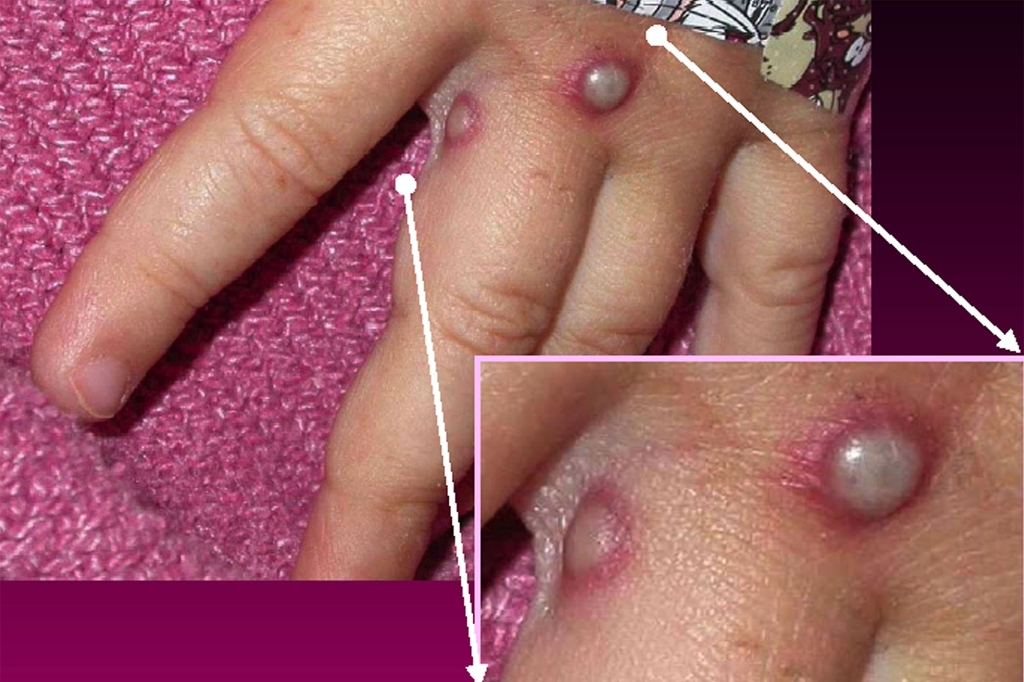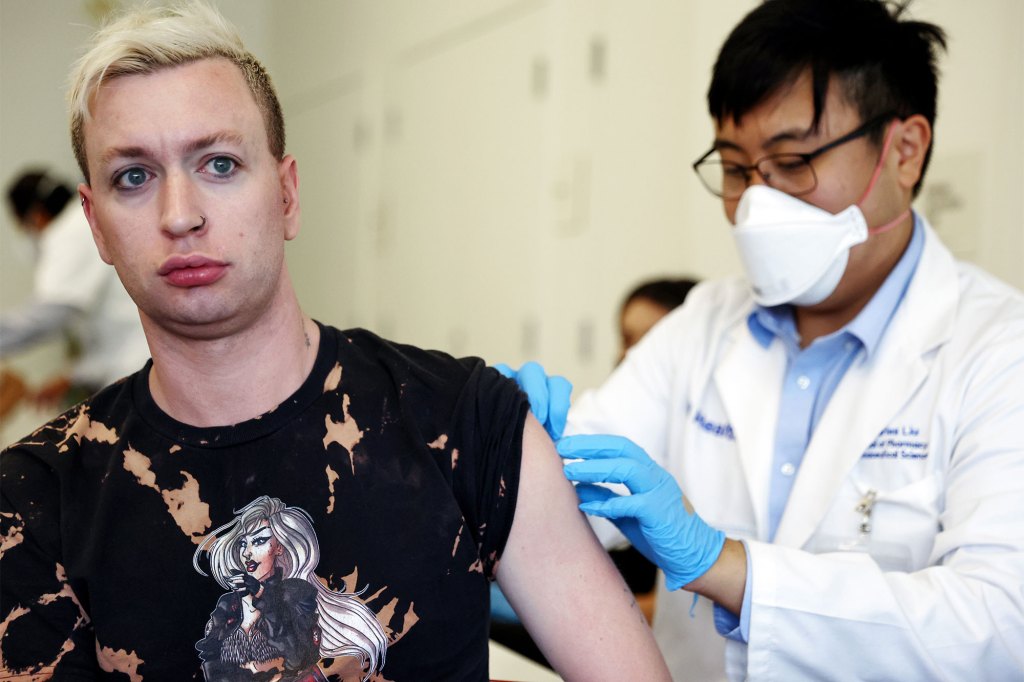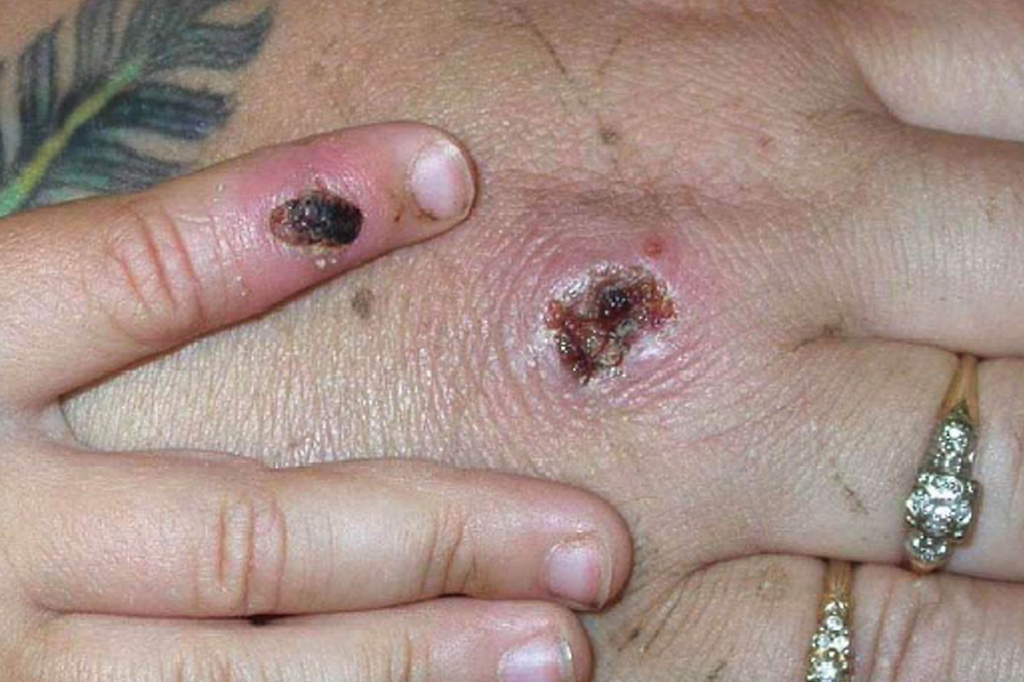What is monkeypox? Myths vs. facts, according to experts
The threat of a monkeypox epidemic now looms as federal health officials work to secure more resources thanks to an emergency declaration by the White House on Thursday.
Health agencies in the US have counted at least 6,600 cases of suspected monkeypox — with another 1,000 cases expected to be added next week, according to epidemiological forecasters. Among the nation’s illness epicenters, New York City is battling more than 1,400 cases following an outbreak during the month of June.
At the same time, the World Health Organization is currently reporting more than 26,000 cases of the disease.
Exactly how and why the once “rare and unusual” virus has recently cropped up, and subsequently spread across continents, remains a mystery.
Dr. John Whyte, chief medical officer of WebMD, told The Post that doctors “are still learning about it,” but reassured patients of their worst fears. “We haven’t known [the current outbreak] to be fatal. And that’s a good thing,” Whyte said.
Another encouraging development: the “emergency” declaration — the goal of which is to “get ahead” of the trend, said Whyte. It paves the way for federal health agencies to gain access to even more resources and federal dollars, to put towards rapid research, data collection, vaccine distribution and clinical trials — all of which, by law, wouldn’t be possible at this rate without emergency authorization. “It gives them more authority to address this early on,” said Whyte.
Here’s what we do know about monkeypox, how to spot it and how to protect yourself from infection.
What is monkeypox?
Monkeypox is a viral disease first discovered in 1958, originating in colonies of monkeys (hence the name), according to the Centers for Disease Control and Prevention.
The first human to be diagnosed was in 1970, in the Democratic Republic of Congo — during a time when public health efforts in the region were focused on eliminating smallpox, which presents similarly with fever, aches and pox lesions across the body.
Until now, most cases of monkeypox in humans have come out of central and western African countries, following contact with an infected animal — mostly rodents, scientists believe, but also occasionally non-human primates.
Experts now believe that the virus may be spreading rapidly, just below doctors’ radars, less unconventional means — sex — as current cases appear to have had nothing to do with animals or travel to Africa.
What are the symptoms of monkeypox?
Those infected with monkeypox should initially see symptoms typical of any virus, such as fever, headache, body aches, swollen lymph nodes and exhaustion. But it’s the rash — called pox — that has become indicative to the disease.
Whyte cautions against using the dermatological signs as the first red flag. The pox, which first appear on one area of the body before they quickly spread throughout, are “not the first sign,” the doctor said. Indeed, anyone who feels they may be coming down with something should refrain from close physical contact with others, regardless of the type of infection.
The time to worry about a potential monkeypox infection should come with an evaluation of your potential “exposures” — particularly, “who [you have] had close physical activity with” — and, ideally, prior to the appearance of rash.
Pox lesions go through a gruesome process, beginning as flat sores that later become raised and filled with infected pus, then turn into scabs that eventually flake off — the whole cycle of which can about a month to complete.

How contagious is monkeypox?
Monkeypox transmission usually occurs through relatively “close physical contact.” Whyte outlined three main modes of disease movement, the most common one being through intimate, skin-on-skin contact: a long embrace, kissing and, of course, sex.
The next is more often seen between those living under the same roof, through the sharing of unclean sheets, towels and clothing with an infected individual. If someone in your household. The final and least likely of vehicles for monkeypox is through respiratory droplets — which would take an infected patient coughing, sneezing or spitting almost directly into your body.
Whyte concedes that one could conceivably catch the virus in a more public setting — like, say, from the seat of a city bus. But “it’s just not realistic,” he insisted, as the pathogen is not known to “survive long on a surface” outside a viable, animal host.
It’s crucial to note that monkeypox is “not a gay man’s disease,” despite the fact that the community has borne the brunt of the outbreak. Women, children and heterosexual men are all just as susceptible provided they, too, come in close contact with the infection.

Is there a monkeypox vaccine?
Though monkeypox is considered milder than its viral cousin, the smallpox vaccine is known to provide some protection against both infections. Thus, those who were inoculated against smallpox at a young age are thought to be less likely to develop a serious case of monkeypox later in life.
However, smallpox vaccines — first developed in 1800, leading to the worldwide eradication of smallpox in 1980 — ceased distribution in the US during the early 1970s, so only middle-aged adults and older might boast some degree of protection. Regardless, the more recently developed monkeypox vaccine, a two-shot regiment approved in 2019, is preferred by doctors, and now increasingly available to high risk groups, namely gay men with multiple sexual partners, sex workers, family members and house mates of infected individuals and those in healthcare who come into contact with monkeypox patients.
Thus far, more than 600,000 vaccines for monkeypox have been distributed by the Department of Health and Human Services’ Strategic National Stockpile, to clinics across the country with an emphasis on hotspots like New York City. By mid 2023, the government hopes to expand the national supply to nearly 7 million doses, which are expected to arrive incrementally over the coming months.

How is monkeypox treated? Is monkeypox deadly?
As there is no cure for monkeypox, treatment is focused on symptom mitigation, except for some cases in which antiviral treatments are used to quell the pathogen. While a vast majority of cases will be resolved without lasting impact, at least one strain of the virus is known to be deadly and kills up to 10% of the people it infects, according to the World Health Organization. Fortunately, the currently circulating virus carries an almost negligible fatality rate. “It’s uncomfortable, it’s painful… But most people recover by two to four weeks,” said Whyte.
Will monkeypox be the next pandemic?
“We don’t know that,” Whyte told The Post, despite what “some pundits” have speculated — on the heels of the COVID-19 pandemic, no less. However, Whyte insisted that the mode of transmission for monkeypox virus is “completely different” from the “airborne” coronavirus — which continues to infect thousands, and kill hundreds, of Americans everyday.
“We have to be alert to it,” said Whyte, “but we don’t want to be alarmist.” Not just yet.
Read the full article Here


